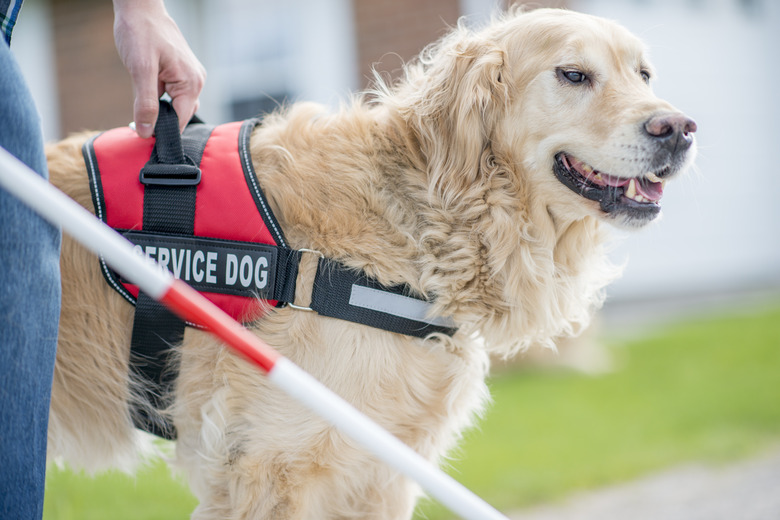What Do The Vest Colors Mean For Service Dogs?
The goal of a service dog vest is to let others know that your dog is a working dog, not a pet. Traditionally, vests are either red or blue but service dog vest colors range from raspberry to bright orange to tie-dye, camouflage, and prints. No law requires a working service dog to wear a vest, and there are no official color requirements should you have your dog wear one.
Why choose a vest
Why choose a vest
Although it's fully your choice whether or not your assistive animal sports a vest, there are several reasons why you would want to have her wear the accessory, not the least of which is that a service vest lets others easily know that your dog is there to do a job.
This means that you're less likely to be asked to remove it from premises such as restaurants or other food handling establishments where dogs aren't usually allowed. It also lets the general public know that your dog isn't there to be petted or fussed over.
Identify your service dog
Identify your service dog
A vest with pockets can be a convenient place to keep your dog's identification or other relevant documentation. Patches such as "diabetes alert dog" or "hearing dog" on the vest can relay necessary info and alert medical personnel to potential conditions should you become unconscious according to WorkingServiceDog.com. Service dog vest colors are a matter of preference, so color alone is an unreliable indicator of what task a dog can perform.
Should you get questioned about your dog's presence, there are only two questions that business owners may ask per the U. S. Department of Justice Civil Rights Division. They include whether your dog is a service animal required because of a disability and what specific task is has been trained to perform. Service animals must be trained to perform specific tasks related to your disability, such as pulling a wheelchair, guiding the blind, or protecting a person having a seizure, according to the Americans with Disabilities Act.
Psychiatric service animals may be trained to check out a room before a person with PTSD enters to make sure it's safe, alert when medication is needed, or calm them during an anxiety attack. Emotional support dogs are not considered service animals according to the ADA as they do not perform specific tasks but are a comfort by their mere presence.
Select a color
Select a color
Whether your dog is a hearing ear dog or performs other specific tasks that qualifies him as a service dog, you can choose a color that best suits your preferences. As any breed of dog may be a service animal, you might want to take that into account when choosing a color.
Very small dogs, such as Chihuahuas, can be easy to overlook, especially at floor level. Bright colors such as a yellow, neon pink, or a purple service dog vest can make a small dog easier to see, especially in establishments where a person wouldn't ordinarily expect to encounter one.
The U.S. Department of Justice also dictates that breeds of dogs cannot be discriminated against. That means if your service animal is a pit bull and you live in a community that bans bully breeds, you can't be kicked out based on your animal's breed. Aggressive or dangerous individual animals may be excluded, so you might want to enhance goodwill toward your dog by choosing a vest in cheerful, non-threatening colors such as orange, yellow, or pink rather than dramatic black or military camouflage.
